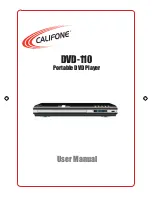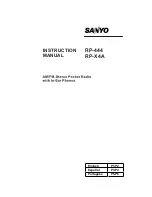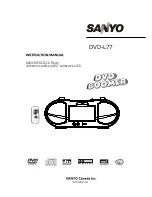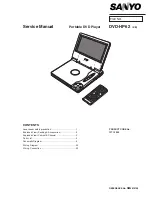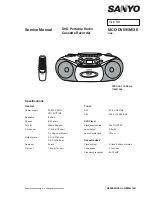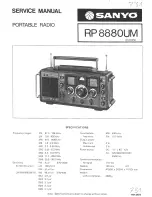
6-4
FUEL SYSTEM
WARNING
Accidental or remote starting can
cause severe personal injury or death. Before
removing a panel or access door, disconnect
the negative (–) cable at the battery to prevent
the engine from starting.
WARNING
Diesel fuel is combustible and can
cause severe personal injury or death. Do not
smoke near fuel tanks or fuel-burning equip-
ment or in areas sharing ventilation with such
equipment. Keep flames, sparks, pilot flames,
electrical arcs and switches and all other
sources of ignition well away. Keep a multi-
class ABC fire extinguisher handy.
Figure 6-5 illustrates how the fuel system is as-
sembled for delivering fuel to and from the fuel injec-
tion system.
Fuel Filter
See the engine Workshop Manual (981-0533) for
fuel injection system service. See DRAINING /
CHANGING FUEL FILTER (Page 4-5) regarding
fuel filter maintenance.
Fuel Pump Tests
A quick test to determine if the fuel pump is weak is
to pinch the fuel bypass hose (Figure 6-5) with rub-
ber tipped visegrips. If an engine that fails to start
starts and runs with bypass flow cut off, fuel delivery
to the engine is weak. Service all of the fuel filters in
the system and repair any restrictions to fuel flow. If
fuel delivery is still weak, replace the fuel lift pump.
To test fuel lift pump delivery:
1. Disconnect the fuel return hose from the line to
the supply tank and point the end into a contain-
er of known volume, such as a 1 or 2 liter (quart)
bottle.
2. Prime the genset by pushing the Start/Stop
switch to
STOP(Prime)
and holding it there for
the duration of the test. It should not take longer
than 1-1/2 minutes to fill a 1 liter container
(2/3 liter per minute).
3. If flow is less than specified, service all of the
fuel filters in the system and repair any restric-
tions to fuel flow. If fuel delivery is still weak, re-
place the fuel lift pump.
Fuel Pump Removal and Installation
Remove the right side panel for access (Page 5-1).
Alternatively, if the starter has been removed from
the front, the fuel pump can also be removed from
the front.
Fuel Fittings
The connections for fuel supply and return that ex-
tend through the side of the drip pan are pipe thread
fittings. For these fittings use
liquid-type
pipe thread
sealant Listed as suitable for diesel fuel. Apply the
sealant sparingly to the male threads only.
CAUTION
Excess liquid-type pipe thread seal-
ant or pieces of Teflon-type pipe thread sealant
can plug the engine fuel system. Apply liquid-
type pipe thread sealant sparingly to the male
threads only. Do not use Teflon tape.
Fuel Hose
Replace worn or damaged fuel hose with with
USCG TYPE A1 or ISO 7840-A1 fuel hose. The
hoses must be long enough to be clamped and to be
routed underneath the engine oil pan without rub-
bing on the oil pan.
Note: The second intake resonator chamber (Fig-
ure 6-4) must be removed to connect and disconnect
the supply hose at the fuel injector.
Redistribution or publication of this document,
by any means, is strictly prohibited.
Summary of Contents for MDKBH Series
Page 9: ...Redistribution or publication of this document by any means is strictly prohibited...
Page 19: ...Redistribution or publication of this document by any means is strictly prohibited...
Page 25: ...Redistribution or publication of this document by any means is strictly prohibited...
Page 41: ...Redistribution or publication of this document by any means is strictly prohibited...
Page 53: ...Redistribution or publication of this document by any means is strictly prohibited...
Page 61: ...Redistribution or publication of this document by any means is strictly prohibited...
Page 87: ...Redistribution or publication of this document by any means is strictly prohibited...
































